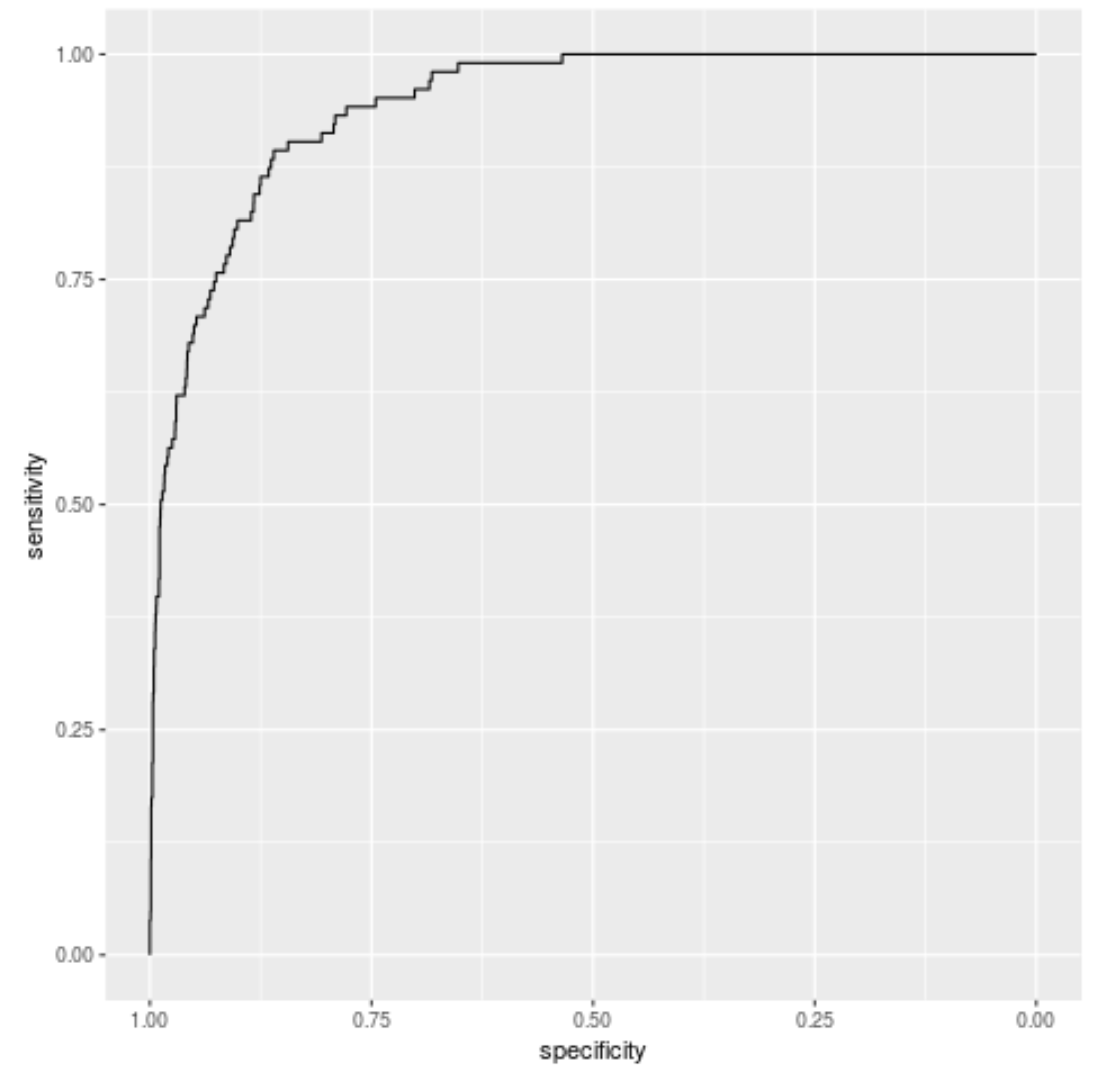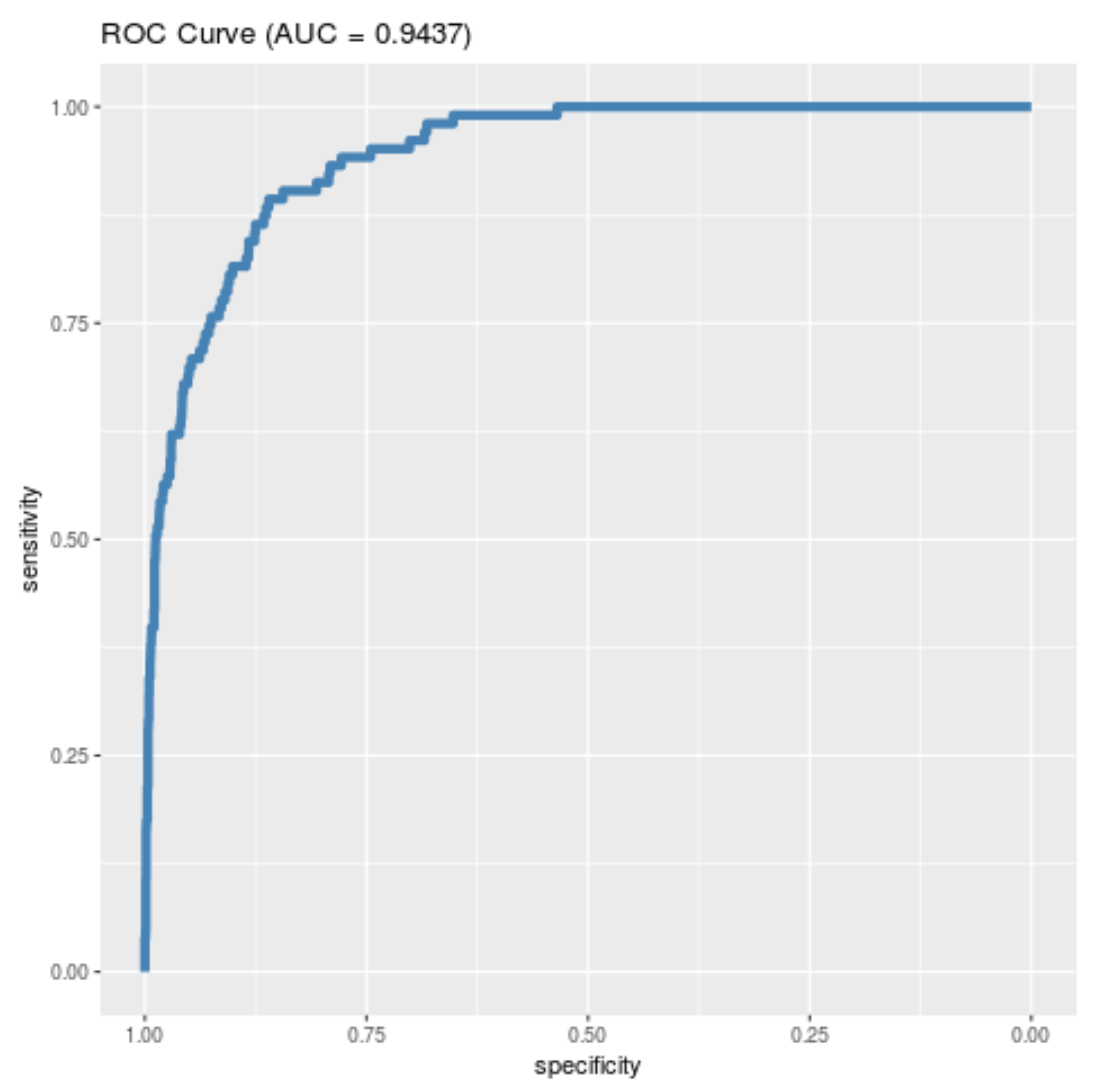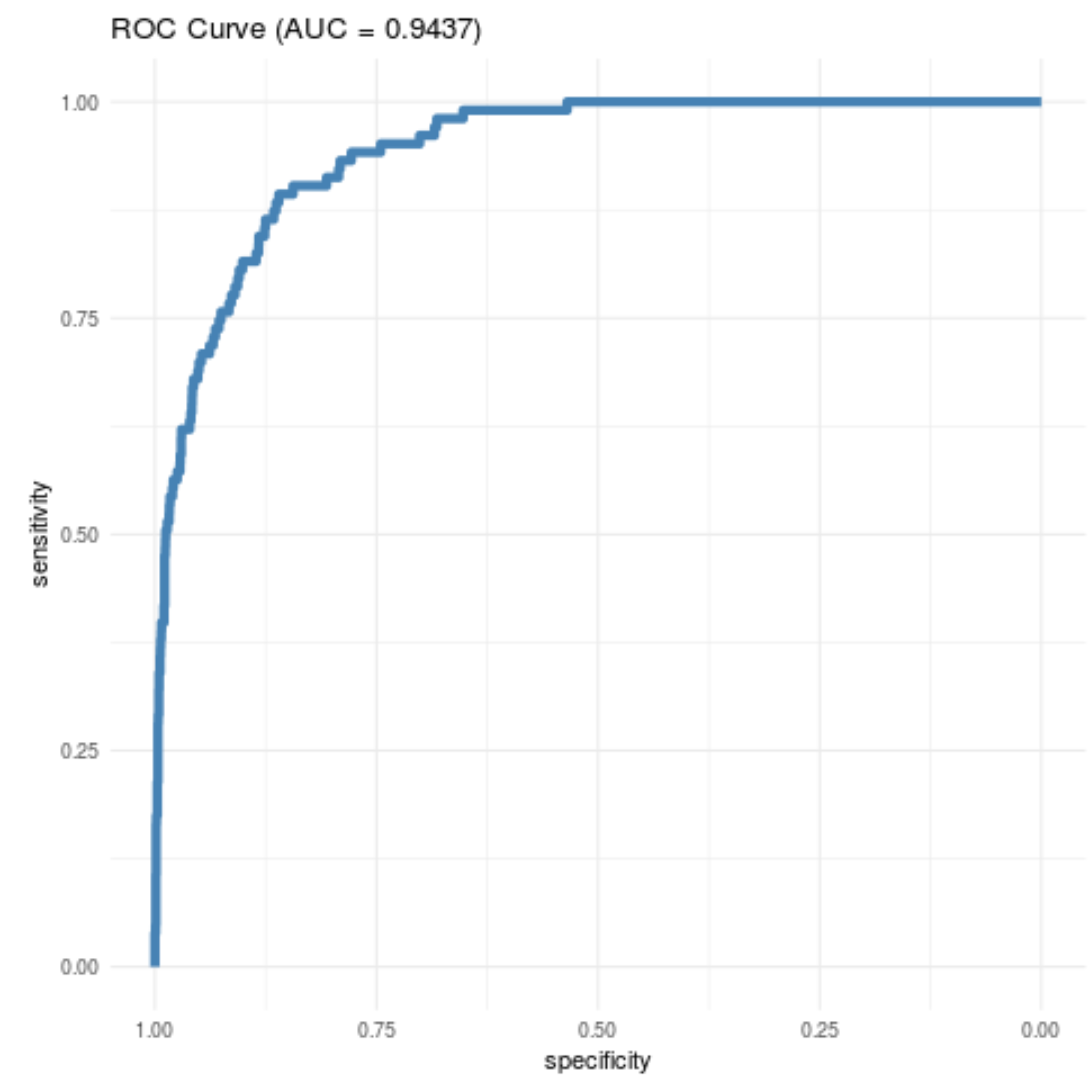Ggplot2를 사용하여 roc 곡선을 그리는 방법(예제 포함)
로지스틱 회귀는 응답 변수가 이진일 때 회귀 모델을 맞추는 데 사용하는 통계 방법입니다. 로지스틱 회귀 모델이 데이터 세트에 얼마나 잘 맞는지 평가하기 위해 다음 두 가지 측정항목을 살펴볼 수 있습니다.
- 민감도: 결과가 실제로 긍정적일 때 모델이 관찰에 대한 긍정적인 결과를 예측할 확률입니다.
- 특이성: 결과가 실제로 부정적일 때 모델이 관찰에 대해 부정적인 결과를 예측할 확률입니다.
이 두 측정항목을 시각화하는 간단한 방법은 로지스틱 회귀 모델의 민감도와 특이성을 표시하는 그래프인 ROC 곡선을 만드는 것입니다.
이 튜토리얼에서는 ggplot2 시각화 패키지를 사용하여 R에서 ROC 곡선을 생성하고 해석하는 방법을 설명합니다.
예: ggplot2를 사용한 ROC 곡선
R에 다음과 같은 로지스틱 회귀 모델을 적합하다고 가정합니다.
#load Default dataset from ISLR book data <- ISLR::Default #divide dataset into training and test set set.seed(1) sample <- sample(c( TRUE , FALSE ), nrow (data), replace = TRUE , prob =c(0.7,0.3)) train <- data[sample, ] test <- data[!sample, ] #fit logistic regression model to training set model <- glm(default~student+balance+income, family=" binomial ", data=train) #use model to make predictions on test set predicted <- predict(model, test, type=" response ")
테스트 세트에서 로지스틱 회귀 모델의 성능을 시각화하기 위해 pROC 패키지 의 ggroc() 함수를 사용하여 ROC 플롯을 만들 수 있습니다.
#load necessary packages library (ggplot2) library (pROC) #define object to plot rocobj <- roc(test$default, predicted) #create ROC plot ggroc(rocobj)

y축은 모델의 민감도(진양성률)를 표시하고 x축은 모델의 특이성(진음성률)을 표시합니다.
플롯에 스타일을 추가하고 플롯의 AUC(곡선 아래 영역)를 포함하는 제목도 제공할 수 있습니다.
#load necessary packages library (ggplot2) library (pROC) #define object to plot and calculate AUC rocobj <- roc(test$default, predicted) auc <- round (auc(test$default, predicted), 4 ) #create ROC plot ggroc(rocobj, color = ' steelblue ', size = 2 ) + ggtitle( paste0 (' ROC Curve ', ' (AUC = ', auc, ' ) '))

플롯의 테마를 수정할 수도 있습니다.
#create ROC plot with minimal theme ggroc(rocobj, color = ' steelblue ', size = 2 ) + ggtitle( paste0 (' ROC Curve ', ' (AUC = ', auc, ' ) ')) + theme_minimal()

최고의 ggplot2 테마에 대한 가이드는 이 문서를 참조하세요.